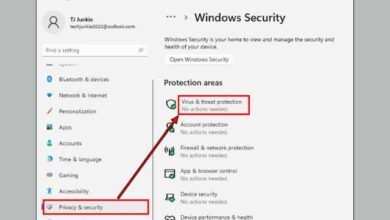How to Install LineageOS

How to Install LineageOS- One of the most well-known custom ROMs available right now is LineageOS, if you’ve been thinking about giving your phone a new lease on life. Here is all the information you want in order to flash this ROM onto your phone.
Ensure That Your Computer and Device Are Prepared
Make sure you have everything you need before getting overly enthusiastic and starting to hurl stuff at a command line, including if your phone is prepared to accept a ROM.
Firstly does your phone work with this? You must confirm that Lineage has a build created especially for your phone. Simply go to the Lineage downloads page, choose the manufacturer of your phone, and then search for your model. You’re in luck because Lineage supports smartphone if it’s there.
It’s important to note that if your phone is available in several variations, as is the case with the majority of Samsung Galaxy devices, doing some research may be necessary. You should then double-check that the handset codename and CPU details correspond to your phone. On the Lineage download page for your phone, you can find that information.
Once you’ve established that Lineage genuinely has a build for your phone, you’ll need to make sure your computer has ADB and Fastboot installed in order to proceed. It is definitely advised that you read our great starting out with ADB guide before you begin.
With that out of the method, you still need to unlock your bootloader or find an appropriate workaround before you can flash Lineage on your smartphone. Based on the model of your smartphone, this may be the most challenging step in the process because many phones include security features that are very hard to get around.
The simplest method to complete this task will be to use your phone’s bootloader unlocking capability, which is assumed throughout this article. If it doesn’t, like most Samsung smartphones, you’ll need to do a little more study on your specific model.
You’ve completed your preparations and are ready to start flashing.
How to Install LineageOS–
Step 1: Assemble your downloads, then activate developer mode-
A few tools will be necessary, so it’s advisable to start gathering them right away.
TWRP: Personal recovery. Currently, this option is the most well-liked and is accessible for a wide range of phones. To flash everything, you must have this.
OS Lineage: Operating system in its genuine form.
(Optional) GApps: You must have a GApps (Google Apps) package available if you want all the Google-ness that comes with Android. More on that is covered further down.
Optional SU File: You must flash this if you want root access
If you did not have time to add your ADB as well as Fastboot files to your system PATH, it’s beneficial to download all of these files to the same place the one with those files.
Here is a brief explanation of each item’s function, the necessity for it, and how to choose the best one for your phone.
Download Team Win Recovery Project (TWRP)
You basically need TWRP, a custom restore, before you flash Lineage (or any other custom package).
Go to the TWRP webpage and tap the “Devices” link to get it.
Enter the model name of your phone. Pay close attention because there may be devices with similar names; you want to be sure you pick the proper one. Nexus and Nexus 5x are two examples. Two separate recoveries from two different phones.
After choosing your phone, scroll down to the “Download Links” section and choose the link that applies to your location.
Press the link for the most recent version from there.
When a new page appears, click the “Download twrp-x.x.x.img” button to begin the install.
Download Your Lineage Build: You’ve already completed half the effort in this situation because you thoroughly searched the Lineage website for your specific phone; all you need to do now is download the most recent version and get started.
Make a note of the Lineage edition it is because you’ll need it if you want to flash Google Apps.
Install Google Apps (Optional): You’re going to need Google Apps if you want to link your smartphone to your Google account, visit the Play Store, as well as make use of all the other characteristics that make Android what it is and what you’re used to.
Get the Lineage edition you’ll be downloading it on by going to the GApps download page; it will probably either be 15.1 or 14.1. To access the appropriate version, visit the OpenGApps link.
You’ll then be presented with a plethora of options, including Platform, Android, and Variant. The Platform is the most crucial item to obtain right now. The GApps version you flash must be compatible with your phone’s processor! You’ll need to review your phone’s specifications to determine what version it is running. A nice place to start is GSMArena.
The other two are simple once you’ve verified the platform version. Just make sure that the Android version is pre-selected correctly. This is the exact amount of material that is included in the variant’s bundle. The default option is Nano, but we advise using Micro or larger—choose Full if you want to be the most stock-like experience.
After selecting everything, click the download button to save the file.
Install SU (Optional): Finally, you’ll need to download the relevant SU file from here if you want root access after installing Lineage. Select the Lineage version that is compatible with your phone’s architecture (which you probably discovered when installing GApps).
An SU file for Lineage 15.1 is not currently available.
Enable Developer Mode and USB Debugging
You must enable Developer Mode as well as USB Debugging on your smartphone after saving and having easy access to all of your downloads.
The quick and dirty is to go to your device’s About area, find the Build Number, and then press the number seven times. We have a whole instruction on how to do this. The Developer Mode option is then activated.
Enter this new menu and select “Android Debugging” to make it active. A newer Android device will require you to activate the “OEM Unlocking” feature as well.
Step 2: Bootloader unlock
It’s time to start working now that everything has been downloaded, enabled, and is otherwise ready to go.
The bootloader of your phone needs to be unlocked first. Backing up your phone is highly advised before doing this.
Connect your smartphone to your computer using USB when you’re ready, and then go to the folder containing your ADB and Fastboot files. To access this folder, you must open a Command Prompt or PowerShell window. Shift-right-clicking the folder and selecting the “Open PowerShell Window here” command are the simplest ways to accomplish this.
When it opens, double-check that your device is connected correctly. At the prompt, type adb devices and press Enter. Your device ought to appear in the list of associated devices when it returns.
Check your phone if you’ve never used ADB previously. A dialogue box requesting consent to grant ADB access ought to be included. Select “Always Allow From This Computer” as well as press the “OK” button afterward.
If adb rejected your request the first time because it was “unauthorized,” try it again now that you have granted permission on your phone. It should display “device,” indicating that it is connected.
Enter the following command once you have typed it:
adb reboot bootloader
The bootloader should load when the phone reboots. Once the device has finished restarting, enter the following command to release the bootloader:
fastboot oem unlock
Make sure you’ve backed up your phone first, as doing so will factory reset it.
You’re prepared to flash a custom recovery now that the bootloader has been unlocked.
Step 3: Flash TWRP
It should take a couple of minutes to format the phone. You can flash TWRP when it’s finished. Start a PowerShell / command prompt window in the TWRP folder, write the following command, as well as press Enter.
It goes without saying that you’ll change nameofrecovery.img> to correspond to your file; for instance, mine is twrp-3.2.1-1-hammerhead.img. Therefore, fastboot flash recovery would be the whole command for me. image twrp-3.2.1-1-hammerhead
Only a few seconds should pass during this process.
Step 4: Reset/Wipe partitions
The recovery that you just flashed must now be launched. Locate the “Recovery Mode” option by using the volume rocker on the phone to browse the menu. In order to enter recovery, click the start button.
The first launch of TWRP shouldn’t take too long. You must slide once it has launched in order to access the recovery screen. Click the “Wipe” button on that screen, followed by the “Advanced Wipe” option.
To begin the wipe, slide the bottom slider while selecting the System, Data, and Cache checkboxes.
After giving it some time to work, use the bottom button to restart the system.
Step 5: GApps, Flash Lineage, and SU
You must return to your computer’s Command Prompt or PowerShell window once your phone has rebooted and is in recovery mode. Enter the command after you type it:
adb push /sdcard
Keep in mind that Android refers to local storage as “sdcard.” An physical SD card in your phone is not necessary for this.
To prepare for flashing, this copies your Lineage download to the phone’s local storage. You must now relocate GApps and SU as well, using the same command but substituting those files.
adb push /sdcard
adb push /sdcard
Three files should have been sent to your phone’s storage in total (if you’re installing GApps and SU). Grab your phone once more after you’re finished. Click the “Install” option first, then select the Lineage download. This has to be the first item on the list!
Once that is chosen, pick GApps by tapping the “Add more zips” option. For SU, repeat the procedure. Ensure the top says “3 of max 10 File queued” once you have them all selected.
You must flash GApps now since they must be installed before the first boot; else, you will have to start over.
Swipe to flash all three files while they are all selected. Just keep an eye on it to make sure there are no errors because this will take some time.
Step 6: Setup and Boot
Once the flash is complete, you must restart the phone.
When it’s up and running, you can set it up just like any other Android phone after a lengthy initial boot. You are now running LineageOS, which is wonderful!
- Lineage OS 19 (Android 12): Updates, Launch and Changelog, A Complete Review
- How to Install Magisk
- Android 12 Vs One UI 4.0: Quick Settings Comparison
People May Ask
How do I install lineage?
Install Lineage OS on Android Phone
- Go into recovery mode on your phone and select Wipe > Advanced Wipe.
- Copy the Lineage OS installation zip file to your phone while connected to the PC.
- Select Install.
- The Lineage OS zip file should be chosen.
- Flash: Swipe to Confirm.
- Hold off until the flashing has finished.
Do I need TWRP to install LineageOS?
You basically need TWRP, a custom recovery, before you flash Lineage (or any other custom package).
Can I install LineageOS on any device?
You must first confirm that your device is compatible with the ROM before downloading Lineage OS for it. Do a search for the device you want to flash on the Lineage OS wiki using your computer. The most well-liked gadgets from practically all significant manufacturers are supported by Lineage OS.
How is Lineage Recovery installed?
- Using dd, installing a custom recovery
- Install Lineage Recovery now.
- Put the recovery image file to the /sdcard root:
- Now, launch an adb shell from a Windows command prompt window or a Linux or macOS terminal window.
- Restart your recuperation.






